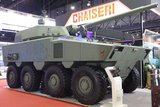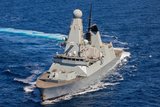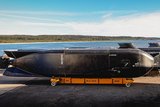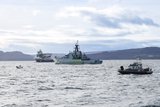Tri-national amphibious landing exercise complete
A multi-national amphibious landing exercise has been carried out by the armed forces of the US, Philippines and Japan at Katungkulan Beach, Marine Barracks Gregorio Lim, during Exercise Kamandag 3.
The ship-to-shore manoeuvre came at the end of two weeks of combined training focused on assault amphibious vehicle interoperability.
The exercise saw Philippine and US forces perform reconnaissance of the beach followed by amphibious assault vehicles from all three armed forces launching from Philippine BRP Davao Del Sur and the US Marine Corps’ USS Germantown and coming ashore. Philippine and US marines secured the objective and Japanese soldiers lead a medical evacuation disaster relief drill.
The drill’s success validated the multinational forces’ ability to conduct complex, synchronised amphibious operations.
US Marine 1st Lt Malcolm Dunlop, an AAV platoon commander with 4th Marine Regiment, 3rd Marine Division, said: ‘Today was about effectively coordinating with our allies from the Philippines and Japan. AAVs representing each country manoeuvred simultaneously to conduct a movement up the beach. It’s crucial that we know how to do things side by side, so that in the face of serious military or humanitarian crises, we can work together to overcome the challenges that face us.’
Kamandag 3 is a Philippine-led, bilateral exercise with participation from Japan.
Related Equipment in Defence Insight
More from Naval Warfare
-
![MBDA-led DragonFire’s latest trials move the LDEW system closer to UK Navy integration]()
MBDA-led DragonFire’s latest trials move the LDEW system closer to UK Navy integration
The DragonFire lines up with other European laser-directed energy weapons being developed in collaboration with MBDA.
-
![US Coast Guard pursues solutions to increase maritime domain dominance]()
US Coast Guard pursues solutions to increase maritime domain dominance
The USCG is seeking technologies, services and applications to better connect its assets and speed up the decision-making process.
-
![Canadian Coast Guard’s OOSV delivery is “major milestone” in fleet modernisation]()
Canadian Coast Guard’s OOSV delivery is “major milestone” in fleet modernisation
The Polar Class 6 platform is the largest CCG science-dedicated vessel and will operate on the country’s east coast.
-
![How the Anduril-HHI autonomous ship plan fits in with the US Navy’s MASC programme]()
How the Anduril-HHI autonomous ship plan fits in with the US Navy’s MASC programme
The new modular vessel is expected to be developed for both commercial and defence use, with a heavy focus on production speed and mission flexibility.
-
![Indo Pacific 2025: Autonomous systems reigned but can the Australian Defence Force afford it?]()
Indo Pacific 2025: Autonomous systems reigned but can the Australian Defence Force afford it?
Multiple autonomous systems and technologies were on display at this year’s Indo Pacific, but questions remain over how the Australian Department of Defence will balance the books.
-
![How the UK Royal Navy is powering up its hybrid fleet to combat new threats]()
How the UK Royal Navy is powering up its hybrid fleet to combat new threats
Since it announced its move towards a new “hybrid navy” earlier this year, the force has announced a number of new uncrewed technologies in the works.

























